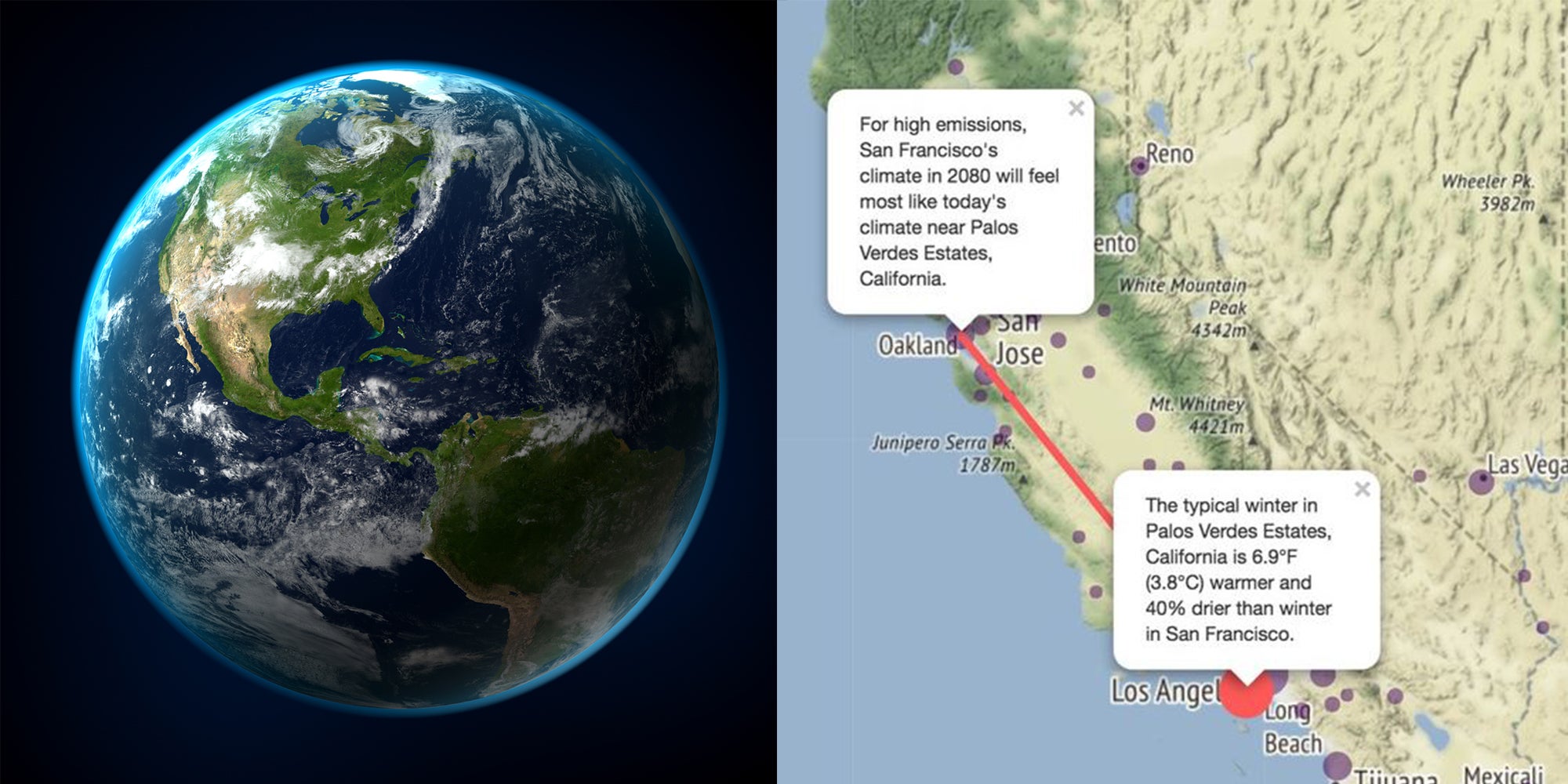A new interactive map will show you how climate change will affect North America by 2080

Your support helps us to tell the story
From reproductive rights to climate change to Big Tech, The Independent is on the ground when the story is developing. Whether it's investigating the financials of Elon Musk's pro-Trump PAC or producing our latest documentary, 'The A Word', which shines a light on the American women fighting for reproductive rights, we know how important it is to parse out the facts from the messaging.
At such a critical moment in US history, we need reporters on the ground. Your donation allows us to keep sending journalists to speak to both sides of the story.
The Independent is trusted by Americans across the entire political spectrum. And unlike many other quality news outlets, we choose not to lock Americans out of our reporting and analysis with paywalls. We believe quality journalism should be available to everyone, paid for by those who can afford it.
Your support makes all the difference.A new interactive map has been published online that will show you how climate change will affect the planet by the year 2080.
As you may be aware, climate change deniers like Donald Trump and Fox News continue to dismiss science and facts because they cannot see it taking place before their eyes.
That's what the new map aims to show by allowing users to see an estimated visualization of what the climate in North America will look like.
According to the map, cities around the United States will experience dramatic change with locations in southern states feeling more like Mexico and Florida feeling closer to Central America.

The map has been created by the University of Maryland Centre for Environmental Science, with the system being detailed in a new paper by Nature Communications.
The aim of the map was to make this crucial information more digestible and less abstract to the public, by comparing 540 urban areas to the climate of a familiar location.

The map was made possible thanks to a statistical technique named climate-analogue mapping which provides comparisons to modern day and future climates of urban areas.
Speaking to Newsweek, Dr Matt Fitzpatrick an associate professor at the University of Maryland said:
Our results show just how dramatic a transformation climate is expected to undergo over the next several decades. These changes are already underway.
If emissions continue at the same rates, many urban areas will eventually experience climates unlike any found at present in the western hemisphere North of the equator.
Our results clearly show the effect that reducing emissions could have on the magnitude of future climate change.
The scientists who worked on the map have acknowledged that it does miss out important issues like sea levels, health complications, extreme weather events and the influx of non-native species.
Fitzpatrick adds:
Everyone should be concerned, but especially those living in places that are particularly dependent on the current climate regime to provide adequate water and where coastal flooding will become a substantial threat.
HT Newsweek
More: A 15-year-old explained why she’s striking for climate change and it’s really inspiring